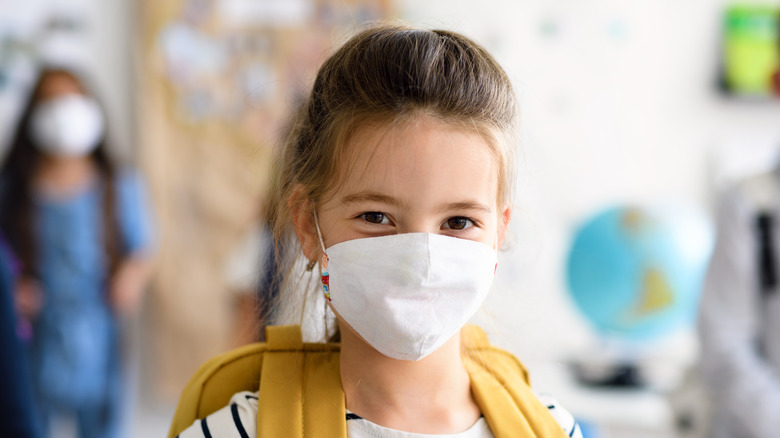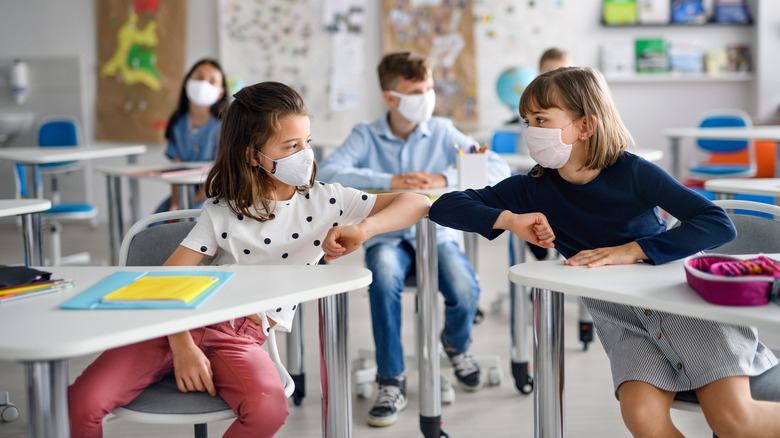What The New Mask Recommendations Will Mean For Schools This Fall
The newest CDC recommendations on mask-wearing came as a welcome surprise to everyone who spent the last year battling fogged glasses, "maskne," and broken earloops, and wondering if we'd have to live this way forever. Not so, says the CDC: People who have been fully vaccinated have gotten the go-ahead to go maskless indoors, outdoors, and even while visiting small groups of friends. The news also came as a sign of hope to parents whose children haven't seen the inside of a school building since the virus hit. According to U.S. News & World Report, just under half of all American students are still either in remote learning or in "hybrid" classes where they attend in-person school a limited number of times per week.
Other officials, including President Biden and UFT teachers' union president Randi Weingarten, agree that schools need to be fully open for the 2021-22 school year so that children can enjoy the benefits of live instruction and peer socialization. So it's looking more and more likely that parents can shop for back-to-school supplies and look forward to a quieter household on weekdays. This is also excellent news for mothers of young children, who represent one of the largest populations of the unemployed in the last year (via The New York Times).
But just how "normal" will schools be this fall?
Some precautions may still be necessary in schools
Since school policies are established by individual states and districts, rules such as mask-wearing vary. For instance, most school districts in New York require both teachers and students to wear masks while on school grounds, though the 6-foot social distancing requirement has been cut to 3 feet (per NBC New York). Parents in South Carolina, on the other hand, are allowed to opt their children out of wearing masks in school, and Florida Gov. Ron DeSantis is seeking to drop mask requirements for students altogether (via NPR). It's likely that mask and distancing rules will continue to change over the next few months, depending on state infection and vaccination rates. At this writing, all individuals 12 and up are eligible to receive the COVID-19 vaccine, and younger children may become eligible later in the year (via Healthline).
Even if schools fully open by the fall, certain precautions will probably still be enforced. According to Vox, social distancing may still be necessary, along with frequent hand-washing. The new American Rescue Plan includes money for schools to upgrade their ventilation, which will decrease the spread of this airborne virus.
The focus inside the classroom will be different, too. Teachers will have to take into account the mental toll the pandemic has taken on their students, along with the academic losses they suffered in the past year. Now more than ever, a whole-child approach and a re-evaluation of how children are assessed will be necessary to help all students succeed, experts tell eSchoolNews.

